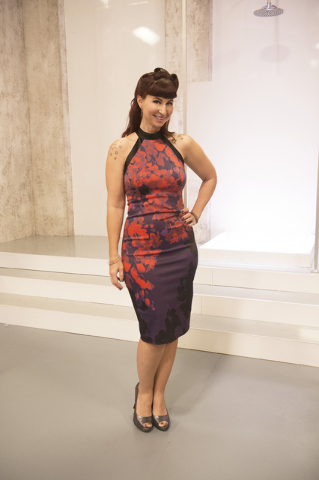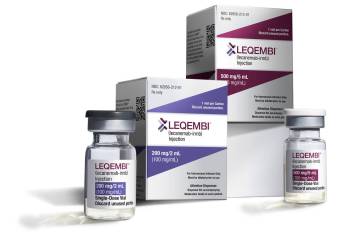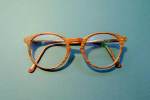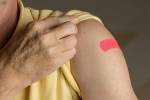8 ways to stay sun safe this summer
Skin cancer kills. Every hour one American dies from it. It is more common than breast and prostate cancer — nearly 5.5 million are diagnosed yearly in the United States! It is important to understand what this means to you – and your loved ones.
First, it is important to understand that the American Cancer Society calls skin cancer “one of the most preventable forms of cancer.” Secondly, the staggering statistics suggest that people are either unaware of – or ignoring – the fact that 95 to 99 percent of cases are associated with sun exposure and tanning beds.
While I understand that the sun’s rays have a rejuvenating effect, especially after a long winter season, there are serious health risks that can develop from our exposure to the sun (and tanning booths). We all strive for a healthy glow, but we need to be aware of these facts along with some helpful preventative measures to protect yourself and your loved ones.
Dr. Nina’s What You Need to Know: About Sun Safety and Skin Cancer
How does the sun cause skin cancer?
Ultraviolet radiation from the sun, which is comprised of ultraviolet A (UVA) and ultraviolet B (UVB) rays, penetrates the skin to cause damage to the cells and DNA. This can result in the development of abnormal cells and uncontrolled growth, or skin cancer – which has the ability to invade or spread to other parts of the body.
Are there other harms of sunlight exposure?
In addition to skin cancers — melanoma, basal cell, and squamous cell cancers — it can also cause:
- Premature skin aging: wrinkles, actinic keratosis, damage. Because this occurs gradually, it is often taken lightly (pun intended). However, experts state that 90% of the visible skin changes commonly attributed to aging are caused by the sun.
- Eye damage: cataracts, pterygium, macular degeneration.
- Immune system suppression: the ability to fight off foreign invaders such as cancer or infection.
When are the sun’s ultraviolet (UV) rays the strongest?
Generally speaking, between 10 a.m. and 4 p.m. Experts state that we should coordinate sun exposure with our shadow. If our shadow is shorter than us, the sun is directly overhead and its rays are strong. Whenever possible, schedule outdoor activities outside of those times.
What are some ways to protect against these harmful rays?
- Prevention is key when it comes to the sun and our skin.
- Clothing is our first line of defense against UV rays and can help protect us by absorbing or blocking much of this radiation. The more skin you can reasonably cover, the better. Materials with a tight knit or weave offer the best protection. Not sure how to determine this? Don’t worry it is easy. Just place your hand between the fabric and a lamp. If we can see your hand through the clothing, it means that ultraviolet light will be able to pass through it.
- Hats, in particular wide-brimmed ones, can block our oh-so-vulnerable ears, nose and neck. Although baseball caps offer protection for the nose, they do not provide protection for the ears and neck.
- Sunglasses can prevent ultraviolet radiation from damaging our precious eyes and vision. Look for glasses that can block 100 percent of UV rays.
- Seek out the shade whenever possible — under a tree or umbrella, for instance — but beware that ultraviolet rays can reflect off of dry sand or concrete.
- Sunblock protects against the harmful effects of radiation
What should I look for when choosing a sunblock?
Choosing the right sunblock or sunscreen can be a challenge and requires some homework. First start by selecting a “broad spectrum” product that will protect your skin from both ultraviolet-A (UVA) and ultraviolet-B (UVB) light.
Next look at the sun protection factor (SPF). This number describes the sunscreen’s effectiveness against UVB light that is responsible for skin burns. A rating system for UVA light, which is responsible for skin aging, does not currently exist. The American Academy of Dermatology recommends that an SPF of at least 30 should be chosen and is sufficient.
How should sunblock be applied?
Experts recommend that 1-2 ounces, equivalent to a shot glass, should be applied to the entire body 30 minutes before going outside. Don’t be stingy! If the layer of sunblock is too thin, it cannot protect us. Make sure to pay extra attention to the forehead, ears, nose, neck and shoulders.
And don’t forget to reapply. The protective effects of sunblock fade with time, and get washed away in the water or with sweating. If it’s not there, it cannot protect us. The time of day also can affect how often to reapply. Between the hours of 10 am and 4 pm, ultraviolet rays are the strongest, even when it is cloudy. It may be necessary to reapply every hour!
Consumer Reports recently tested 60 sunscreens and found that 43 percent of sunscreens failed to deliver the SPF protection promised on their labels! Based on these findings, they recommended that we choose products with a SPF 40 or higher, so that we can improve our chances of getting at least an SPF of 30.
How can I screen for skin cancer?
Experts recommend that we examine our skin from head-to-toe every month and see our physician if we notice any new or changing lesions. The Skin Cancer Foundation has an easy-to-understand self-examination guide on how to perform a step-by-step exam at www.skincancer.org.
Are there special recommendations for our children?
Babies under 6 months should never be exposed to direct sunlight. Use a stroller with a hood or canopy and cover their skin, including their arms and legs, with protective clothing. Pediatricians do not recommend using sunscreen or sunblock on babies.
Children should be taught to practice sun protection from an early age. A bad sunburn can double their risk of developing cancer down the road.
And children are like sponges and love to imitate — so make sure to be our children’s role model. If they see us protecting ourselves, it is more likely that they will, too.
As we step into our sunny days, naturally our exposure increases. And when it comes to skin cancer, prevention is key. Making sure to avoid, protect against and block ultraviolet radiation, combined with performing monthly self-examinations, will lower skin cancer risks.
Remember the great majority of skin cancers can be prevented. Have fun in our warm, sunshiny days – but always keep skin cancer prevention in mind.
This article is for general information only and should not be used for the diagnosis or treatment of medical conditions and cannot substitute for the advice from your medical professional. Dr. Nina has used all reasonable care in compiling the current information but it may not apply to you and your symptoms. Always consult your doctor or other health care professional for diagnosis and treatment of medical conditions or questions.




























